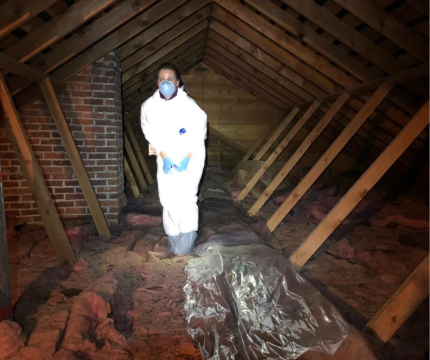ARCHIVED NEWS RELEASE
This document is provided for archival purposes only. Archived documents
do not reflect current WDFW regulations or policy and may contain factual
inaccuracies.
News release Aug. 25, 2020
Abby Tobin, White-nose Syndrome Coordinator (WDFW), 360-999-7958
Rachel Blomker, Communications Manager (WDFW), 360-701-3101
Ann Froschauer, Public Affairs Officer (USFWS), 360-561-2018
OLYMPIA – The fungus that causes white-nose syndrome, an often fatal disease of hibernating bats, has been confirmed for the first time in Chelan and Snohomish counties. Other Washington counties affected by the disease or the causal fungus include King, Kittitas, Lewis, and Pierce.
White-nose syndrome is harmful to hibernating bats, but does not affect humans, livestock, or other wildlife. The disease is caused by the fungus Pseudogymnoascus destructans, which attacks the skin of hibernating bats and damages their delicate wings, making it difficult to fly. Infected bats often leave hibernation too early, which causes them to burn through their fat reserves and become dehydrated or starve to death.
As part of an ongoing white-nose syndrome monitoring effort, WDFW biologists collected guano (feces) samples this spring from areas frequented by bats around the state. WDFW sent guano samples to the U.S. Geological Survey (USGS) National Wildlife Health Center in Madison, WI for testing.

USGS scientists recently confirmed the presence of Pseudogymnoascus destructans, the fungus that causes white-nose syndrome, in samples collected from a mixed Yuma myotis (Myotis yumanensis) and little brown bat (Myotis lucifugus) maternity colony in Snohomish County, and a little brown bat maternity colony in Chelan County.
“These findings are concerning and suggest the fungus that causes white-nose syndrome continues to spread in Washington,” said Abby Tobin, White-nose Syndrome Coordinator for WDFW. “We’re concerned this eventually may lead to population declines in Yuma myotis, little brown bat, and other bat species vulnerable to the disease.”
As predators of night-flying insects, bats play an important ecological role in preserving the natural balance of properties and neighborhoods. Washington is home to 15 bat species that benefit humans by eating tons of insects that can negatively affect forest health, commercial crops, and human health and well-being.
First seen in North America in 2006 in eastern New York, white-nose syndrome has killed millions of hibernating bats in eastern North America and has now spread to 35 states and seven Canadian provinces.
In 2016, scientists first documented white-nose syndrome in Washington near North Bend in King County. Since then, WDFW has confirmed over 70 cases of the disease in four bat species in the state. A map showing fungus and white-nose syndrome detections in Washington is available online at https://wdfw.wa.gov/bats.
WDFW collaborates with partners, including U.S. Forest Service, Bureau of Land Management, U.S. Fish and Wildlife Service, Washington State Department of Health, wildlife rehabilitators, and others to collect samples from bats and the areas where they live around the state for the past four years. This proactive surveillance work helps scientists detect the presence of the fungus that causes white-nose syndrome and track its spread.
WDFW urges people to not handle wild animals, especially if they appear sick or are found dead. If you find sick, dead, or groups of bats, or notice bats acting strangely, such as flying outside during the day in winter or spring, please report your sighting online at https://wdfw.wa.gov/bats or call WDFW at 360-902-2515.
Even though the fungus is primarily spread from bat-to-bat contact, humans can unintentionally spread it as well. People can carry fungal spores on clothing, shoes, or recreation equipment that touches the fungus.
To learn more about the disease and the national white-nose syndrome response, and to get the most updated decontamination protocols and other guidance documents, visit www.whitenosesyndrome.org.
For more information on Washington bats, visit https://wdfw.wa.gov/species-habitats/living/species-facts/bats.
WDFW is the state agency tasked with preserving, protecting and perpetuating fish, wildlife and ecosystems, while providing sustainable fishing, hunting, and other recreation opportunities.